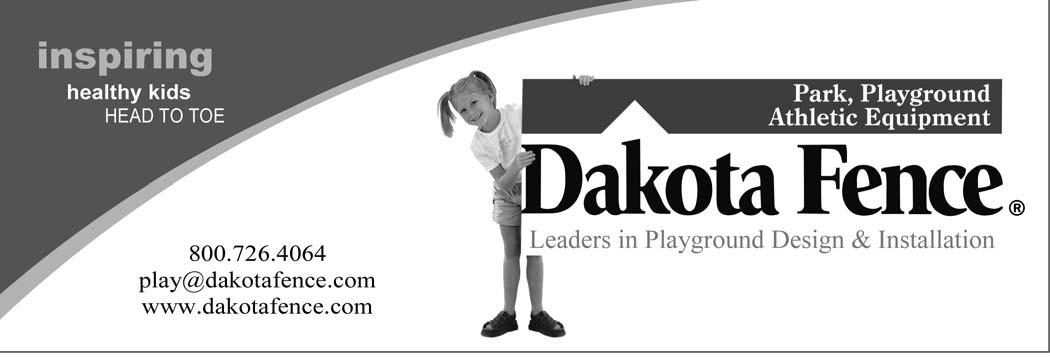
4 minute read
The Importance of Active Parks and Recreation Departments
Recreation and leisure are important to have in every stage of life. Miriam-Webster defines leisure as freedom from work or duties. Therefore, any activity that you willingly engage in that is not work related is considered leisure. In adulthood, it may be the leisure activities on weekends that help us muster up the energy to go another five days at work. Throughout teenage and adolescent years, leisure and recreation activities are how an individual forms bonds and discovers life-long interests and hobbies. These activities form our personalities and help develop skills.
Advertisement
Recreation and leisure are often viewed as being one in the same. Leisure choices are at-will, passive activities that we engage in during unobligated free time. Recreational activities are those that bring joy and involve fun and excitement. Both are important and parks and recreation departments serve as a means for individuals of all ages to engage in these types of activities.
Active communities are important for good quality of life. An active parks and recreation department has the ability to add value to a city for this reason alone. There is much more to recreation and leisure activities than deviation from the stresses of work and school. The National Recreation and Park Association (NRPA) released a report which summarizes the key categories in which parks and recreation departments contribute to the building of healthy, vibrant communities. Physical activity, mental health, social function and youth development were listed among the top benefits of these types of facilities. Let’s examine how these factors can contribute to a city.
Physical health is important in all stages of life. From infancy to late adulthood, without health, very little in life can be enjoyed. Parks and recreation departments help to promote health through physical activity for individuals of all ages, not only through sports, but also through programs such as fitness courses and active programs for children. According to the CDC, more than one-third of U.S. adults and one in six children are obese. Obesity related conditions such as type 2 diabetes and certain cancers are leading causes of preventable death in the U.S. Increased physical activity can greatly reduce these numbers in both populations.
Michelle Obama’s “Let’s Move Outside” campaign aims to fight childhood obesity through the promotion of physical activity. Parks provide activities such as organized sports, biking trails, swimming and many other activities that help combat this issue. Parks also play a key role in the health and wellbeing of senior adults in a community. The availability of green spaces results in higher levels of physical activity for older adults.
In addition to enhancing physical activity, the presences of neighborhood parks promote mental health and psychological wellbeing. Numerous studies demonstrate that access to green views and environments can improve cognitive functioning, impulse control, resilience to stressful life events, and overall mental health. Conversely, studies report a link between low nature access with increases in deficit/hyperactivity disorder (ADHD), clinical depression, stress, and anxiety.
Social function is another benefit of parks and recreation in a community. Parks aid in forming relationships with individuals in neighborhoods and helps develop a greater sense of community as well. Once a sense of community is
established, it leads to increases in civic-mindedness, generosity and trust. This sense of community can very well lead to reduced crime. Research conducted by the American Planning Association suggests that neighborhoods with parks and green spaces have fewer violent and property crimes and neighbors tend to support and look out for one another (APAplanningbook.com). This should be a goal of any city.
Although the demographics for those engaging in criminal activity vary, some cities have large percentages of criminal activity among youth. Recreational programming can help reduce these numbers. It is unrealistic to claim that organized youth sport alone can reduce the levels of youth crime in society because the causes of youth crime are complex and multidimensional. Organized sport programs can, however, contribute to reducing youth crime by giving young people a positive identity, feelings of empowerment and by helping youth acquire leadership, teamwork and self-governance skills under adult supervision (Jamieson and Ross, 2007).
Recreation programs play a key role in youth development in other aspects as well. When you hear Parks and Recreation, your mind may wonder to times of playing ball in a local league or to the many hours spent on a neighborhood playground. Participating in recreational programming helps children and adolescents develop skills that are essential throughout their lives. It is through active play that they develop and discover the person that they will become in adulthood. Active parks and recreation departments prove to have many benefits for communities. Physical health, mental health, social function and youth development are key areas effected by programs offered though municipal recreation departments. Creating avenues for engagement in both organized recreational activities as well as leisure prove to be essential to the overall wellbeing of any community. Providing opportunities through trails, the availability of greenspaces and parks, as well as organized sports and recreational programming are just some examples of ways to keep the community active, thus increasing the overall quality of life.
References
j Jamieson, Lynn M. and Ross, Craig, M. (2007)
Research update: Using recreation to curb extremism.
Parks and Recreation. February. Vol. 42. No. 2. j http://www.nrpa.org/uploadedFiles/nrpa.org/
Publications_and_Research/Research/Papers/
Synopsis-of-Research-Papers.pdf j htttp://www.planning.org/cityparks/breifingpapers/ saferneighborhoods.htm
Article originally published in the Mississippi Municipal League’s quarterly publication of Mississippi Municipalities, Volume 64, Issue 4, written by Chandra Fontenot, President of the Mississippi Recreation and Park Association.











